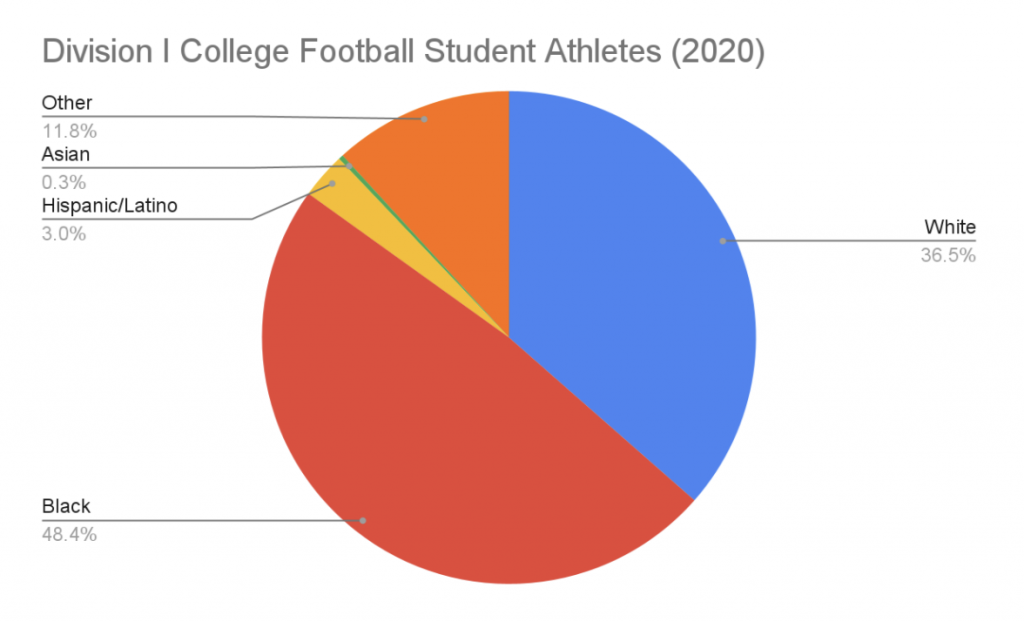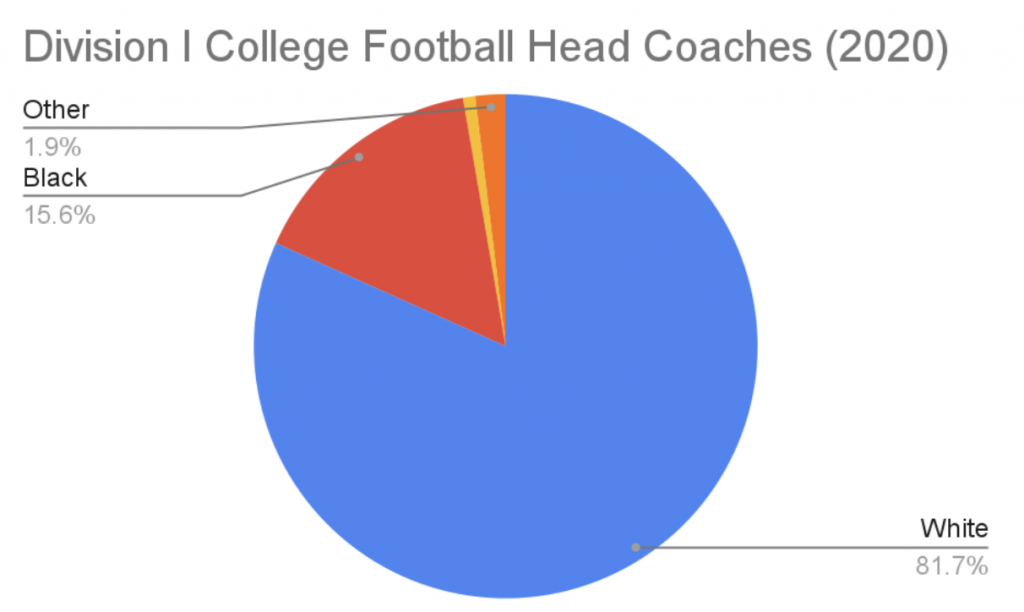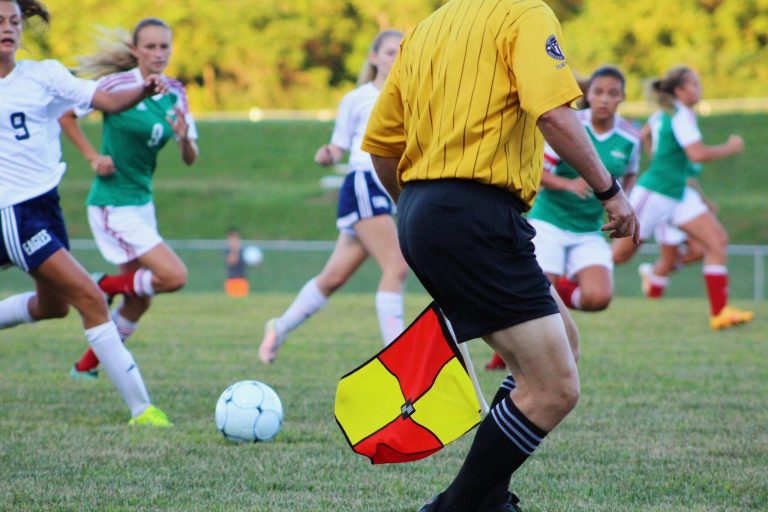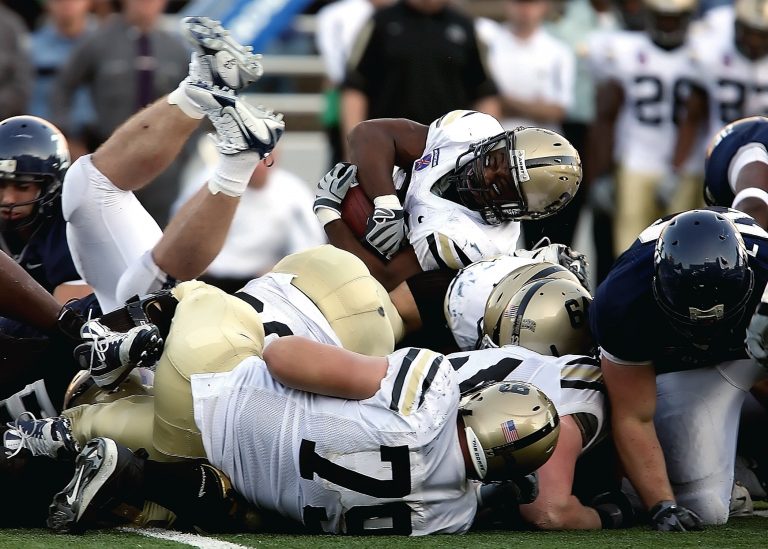Division I College Football: What is the Diversity of the Popular American Sport?
Each August, students and supporters from all over the country brace for the start of the college football season. College football is one of the most popular sports to watch in the United States. According to a Gallup poll in 2017, approximately 56% of pollsters said they were fans of college football, only behind professional football (57%) and Olympic sports (63%). And while professional football and Olympics sports had declined in popularity, college football increased by two percentage points from 2012. By far, the most essential part of college football is the players, all of whom are student-athletes. While the diversity of college football players has been displayed for decades, the noticeable lack of diversity among college football coaches is a significant problem that needs addressing.
What Does the Data Say About Division I College Football Diversity?
Data from the NCAA Race and Gender Demographics Database shows that among Division I men’s college football student-athletes in 2020, 36.5% were white, 48.4% were black, 3% were Hispanic/Latino, 0.3% were Asian. Student-athletes are more representative of minorities than many other sports.

Race and Gender Demographics Database shows that among Division I college football head coaches in 2020, 81.7% were white, and 15.6% were black, with other minority groups also severely lacking representation. For Division I College Football Offensive Coordinators, 82.7% were white, and 14.8% were black. For Defensive Coordinators, 74% were white, and 20.6% were black. Additionally, for all other assistant coaches, 51.8% were white, 40% were black, 1.1% were Hispanic/Latino, and less than 1% were Asian.




These statistics from the NCAA official website are alarming and very telling to the current state of college football. In the decades following the civil rights movement and the desegregation of college football, players have become increasingly diverse. Yet coaches and other positions of authority remain predominantly controlled by white men. It’s unacceptable that nearly 50% of Division I college football players are black, yet less than 16% of Division I college football head coaches are black.
How Have Programs Worked to Increase Coaching Diversity?
It’s inferred that there has been an effort to increase the level of diversity in coaching positions in college football. However, the most diverse area of college football coaches are those in the category “all other assistant coaches”. The positions with lesser influence and authority have been increasing diversity and representation. An increase in representation is always great no matter the area. However, it needs improvement in higher authority areas like with more diverse head coaches, offensive coordinators, and defensive coordinators.
Colleges and universities should realize that an increase in the diversity of coaches, to better represent that student-athletes being coached, will ultimately attract more student-athletes to their program. According to an article by the Spartan Newsroom, a newspaper at Michigan State University, Midwest recruiting analyst Allen Trieu stated that “prospective student-athletes prioritize diversity when deciding which colleges to attend.” The logic behind this makes sense. Trieu mentioned how student-athletes want a coach who can relate to their life experiences and said “I would think that it helps to have a coach who’s been in their shoes.”
Why is There More Work That Needs To Be Done?
It is important to note that some college football conferences are incredibly lacking in the diversity of their coaches. One of the biggest and most challenging college football conferences is the SEC. For the 2021 season, they have zero head coaches of color. This is significant for many reasons, specifically given that the SEC typically has many black student-athletes on their teams. Yet, not a single head coach in the conference is black. Given the location of the SEC (the South-Eastern Conference), in the historically segregated deep south, it is sadly unsurprising that this is the current situation. These schools have no problem exploiting student-athletes, many of whom are people of color, for their financial gains and self-promotion. Still, not one of those universities can hire a head coach of color.
It is not difficult to see how much disparity there is between the diversity of the college football players and the diversity of the coaches under who they play. One hundred thirty college football teams compete in Division I. While most of these programs severely lack coaching diversity, hopefully, there will be a change in the upcoming years. There needs to be a push for coaching diversity within the top schools from the big and small conferences. As the popularity of college football is likely to continue to grow, the universities must aim to represent everyone in their college football teams, both with it’s players and, more specifically, with its coaches.






